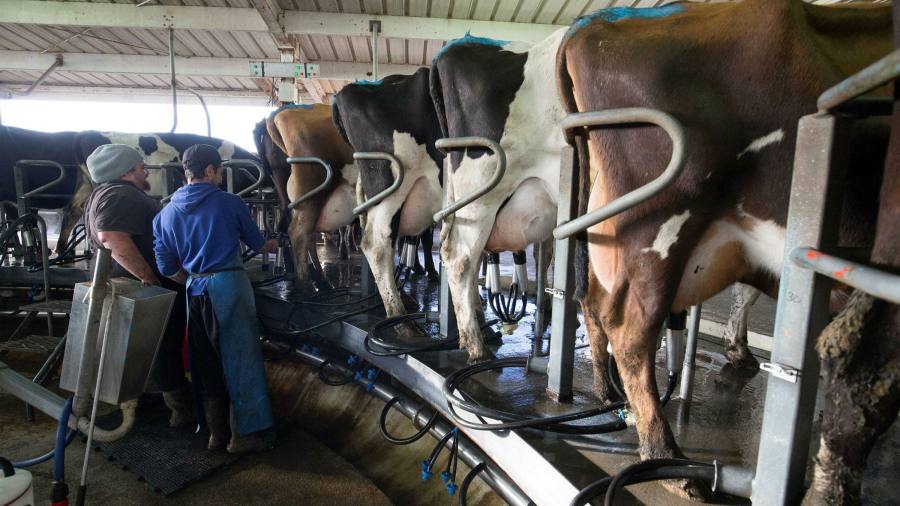Milk costs are hovering on the expectation that an already tight market will likely be hit by additional disruption to fertiliser and feed provides and inflationary pressures following Russia’s invasion of Ukraine.
Unhealthy climate in New Zealand, the US and Australia had already mixed with rocketing gasoline costs and pandemic-related provide chain disruptions to place stress on milk producers within the 5 largest exporters earlier than the warfare.
Mixed milk manufacturing in New Zealand — referred to as the “Saudi Arabia of milk” as a result of it controls 35 per cent of world exports — the EU, Australia, the US and Argentina fell 1.7 per cent in January in comparison with the earlier yr, down in line with commodity dealer StoneX.
Milk output for the 5 producers fell yr on yr, with New Zealand and Australia posting declines of greater than 6 per cent.
Following the beginning of the warfare on February 24, costs of essential merchandise have risen additional. Anhydrous milk fats, a core dairy product, hit a report $7,111 per tonne on March 15, in line with World Dairy Commerce index, which displays New Zealand dairy costs. Entire milk powder, essentially the most actively traded product, hit an eight-year excessive this month.
New Zealand firm Fonterra, the world’s largest dairy exporter, stated final week it was paying farmers 30 per cent extra for milk than it did a yr in the past and predicted the value would rise additional.
“The battle in Ukraine has added to an already advanced Covid-19 working atmosphere, impacting international provide chains, the oil worth, and international provide of grains,” Fonterra chief government Miles Hurrell stated as the corporate reported interim outcomes on Thursday.
Michael Harvey, an analyst at Rabobank, stated that though dairy processors and meals corporations have been bearing the brunt of prices, customers have been prone to face worth will increase.
Harvey added that Russia’s invasion of Ukraine would add to take advantage of manufacturing prices, as each nations are main exporters of nitrogen-based fertilisers and wheat, an vital feed for cattle together with corn and soy.
New Zealand and the EU account for about 70 per cent of milk exports, adopted by the US, Australia, Brazil and Argentina.
Craig Hough, director of coverage and technique at Australian Dairy Farmers, a commerce physique, stated the rising price of feed was a “large downside” for dairy farmers as a result of it accounts for 70-80 per cent of prices.
Hough added that Australian dairy farmers imported most of their fertiliser from China. However the gasoline provide crunch following the Ukraine warfare and pandemic restrictions in China because the nation faces a rising Covid outbreak, meant it was “arduous to get fertiliser, and it’s bloody costly”.

